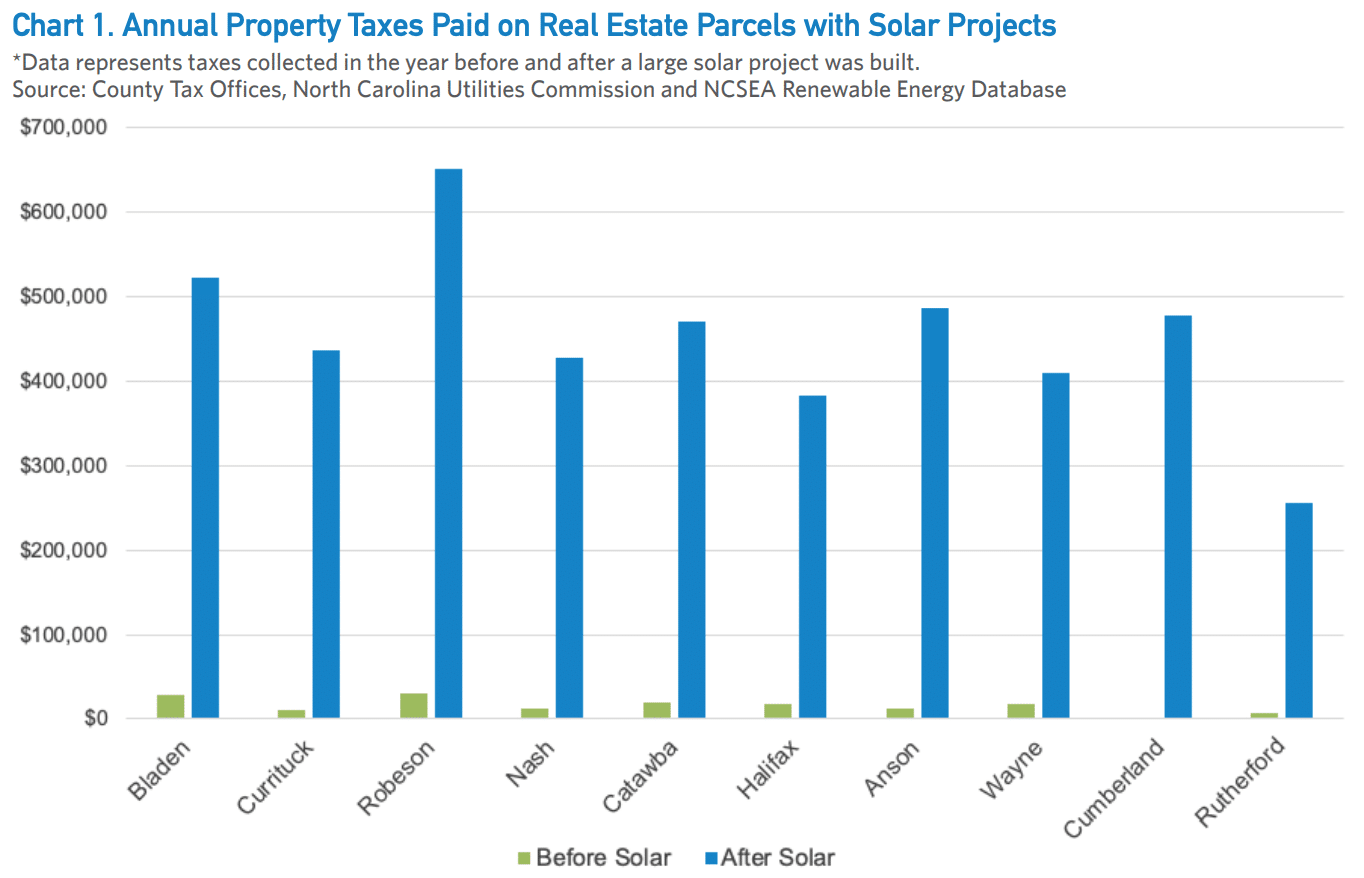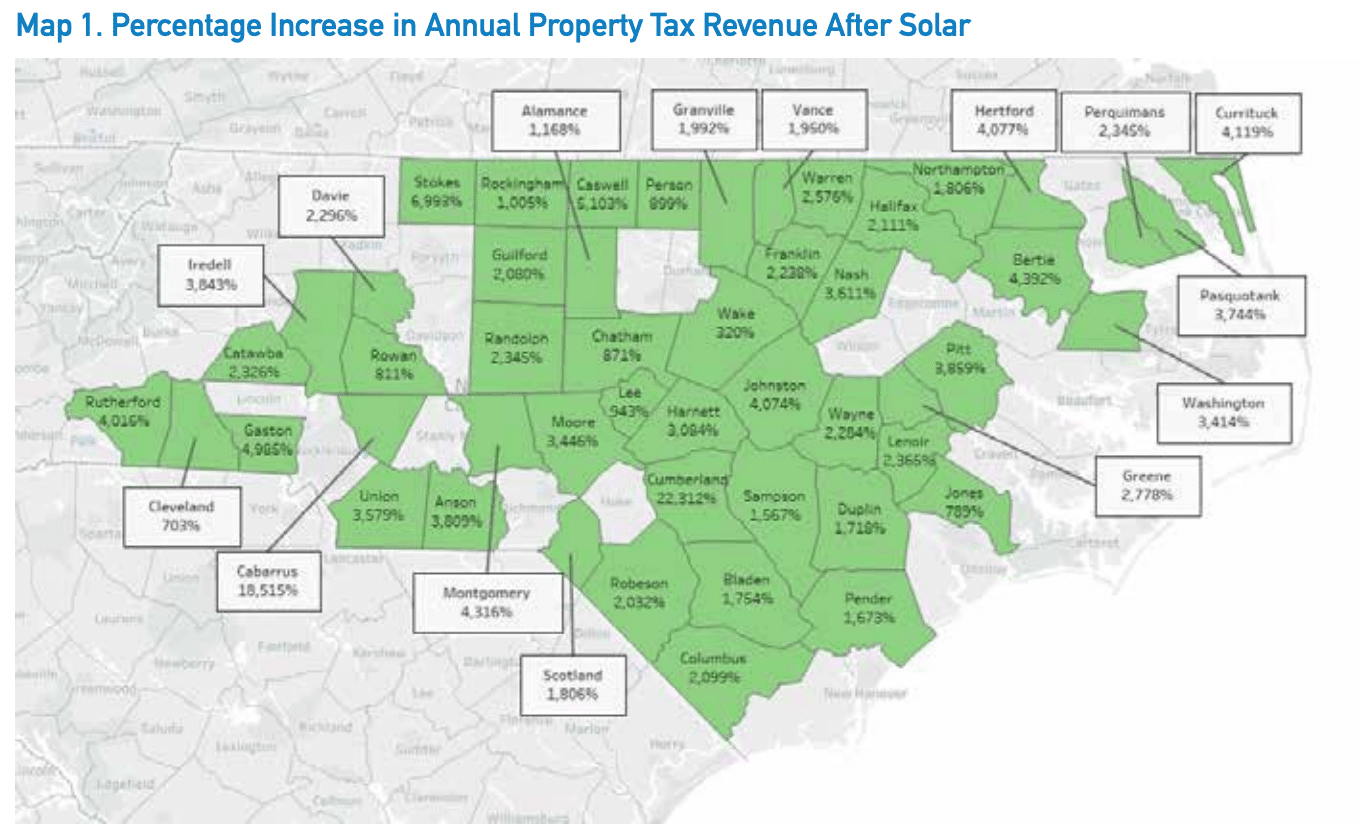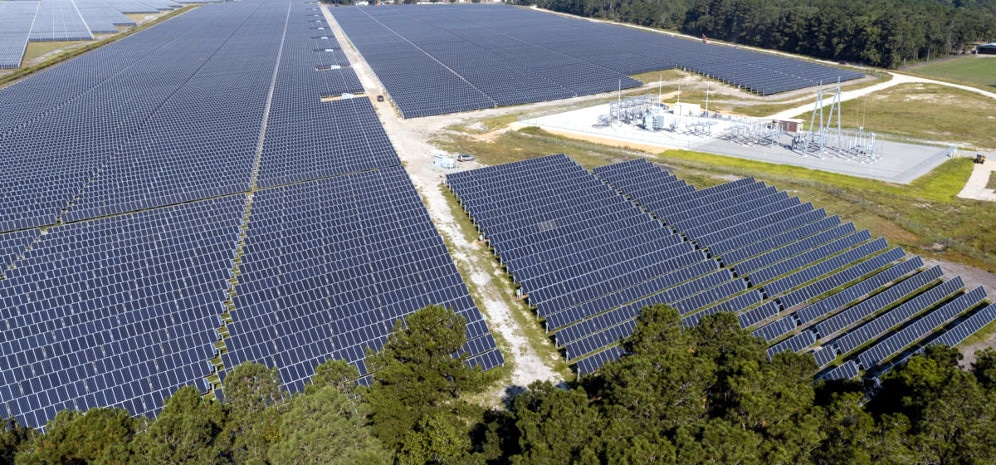One of the most understated values associated with solar projects is the tax revenue that said projects bring to the communities they’re located in. We often get so caught up in capacity, battery inclusion and emissions reduction that we neglect to realize that we’ve created a forgotten metric, one that is remarkably tangible.
In its new report, Increased North Carolina County Tax Revenue from Solar Development, the North Carolina Sustainable Energy Association gives a voice to this oft-overlooked metric, and a loud one at that. The report uses publicly available property tax data from 50 North Carolina Counties to quantify the tax revenue increase on properties that hosted solar through 2017.
Statewide, properties that developed solar saw a 2000% percent increase in tax revenue, growing from $513,000 cumulatively in the year before their projects were constructed to $10.6 million in the year after. The drastic increase in tax revenue that solar projects account for is best portrayed below, in one of the funniest graphs ever made.

What’s more is that this isn’t even nearly the full scope of added tax value. The report does not include business personal property tax paid on public utility-owned solar equipment. This is because the owners of those projects pay taxes to the North Carolina Department of Revenue, which then redistributes the money to counties in a lump sum, making specific property tax numbers essentially invisible.
This represents a substantial sum of tax revenue, as it encompasses eight projects totaling 166 MW, with half of those projects being larger than 5 MW in capacity. For reference one of those projects not included is the the 65 MW Warsaw Solar Facility in Duplin County. A similar installation, the also-65-MW Shoe Creek Solar project in Scotland County, paid over $160,000 in tax on solar equipment alone in the year after installation.
As would be expected, some counties get “more” out of their solar installations than others.

Of the 50 counties that reported data, only 6 saw less than a 1000% increase in tax revenue, with the lowest mark in the state being Wake County’s 320% growth across 11 projects totaling 35 MW in capacity. The big winner came from a small situation, as Cabarrus county saw a tax revenue increase of 18,515% after installing a 5 MW installation. Those taxes paid rose from $255 annually to $47,533. No big deal.
Money talks and, moreover, it makes friends. For the future of solar development, there is no stronger ally to have than the government and the best way to make the government your friend is to give them money. No issue there. This is especially important when you get to smaller and smaller levels of government, because these are the branches that have the most say in solar development. By making good with local governments and citizens, there will be very little stopping solar from showing the widespread generation potential it has.
This content is protected by copyright and may not be reused. If you want to cooperate with us and would like to reuse some of our content, please contact: editors@pv-magazine.com.








By submitting this form you agree to pv magazine using your data for the purposes of publishing your comment.
Your personal data will only be disclosed or otherwise transmitted to third parties for the purposes of spam filtering or if this is necessary for technical maintenance of the website. Any other transfer to third parties will not take place unless this is justified on the basis of applicable data protection regulations or if pv magazine is legally obliged to do so.
You may revoke this consent at any time with effect for the future, in which case your personal data will be deleted immediately. Otherwise, your data will be deleted if pv magazine has processed your request or the purpose of data storage is fulfilled.
Further information on data privacy can be found in our Data Protection Policy.